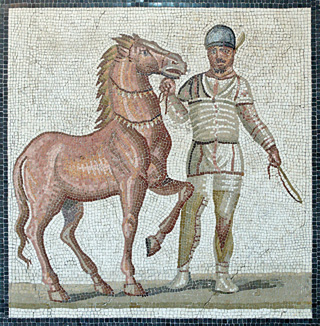

Rome, c. 146. The auriga Cayo Apuleio Diokles was removed at the age of 42. His companions and followers made an inscription in his honor that captured Diocles’ spectacular trajectory. Among other things, they received in the inscription an amount earned in the activity: 35,863,120 sesterds.
Kaio Apuleio Diokles was born in 104 in the capital of the province of Lusitania, in Emerita Augusta (now Mérida, Spain). The horses of Lusitania were famous in the Empire and, considering the circus of the city, it is not surprising that Emerita Augusta aurig had a rich quarry.
He began to compete in the official runs of the 18-year-old Quad, with the white team as the main rival. At 24, he entered the green team, where he was three years old, and finally, he spent most of the years in favor of the red team, until he retired at 42. The long career of 24 years was exceptional, as many aurigas die young in traffic accidents, while many others were forced to abandon careers for injury before the desired.
The success rate of the guide square was also unusual: 34%. According to his registration in Rome, he participated in 4,257 races and won in 1,462. In another 1,438 races, he was second or third on the finish line. In addition, when he seemed to have no chance of winning, he was famous for his ability to move forward, and also because he had a ducenary among the four horses that threw the cart, a horse that had won over 200 races.
Their earnings did not come solely from their victories. The merchandising of the time also contributed a lot to the Diocles pattern. Lovers of gladiators and aurigas used to buy very varied souvenirs: oil lamps, mosaics with the image of the athlete...
He didn't get very far from Rome at the end of his sports life. He stayed in Lazio, in Praenest, in the present Palestrina, and there he died. We don't know the date of death.
According to Forbes magazine, in 2009 golfer Tiger Woods became the first athlete to exceed $1 billion in a profit year. According to Peter Struck, researcher in Classical Studies at the University of Pennsylvania (EE.UU. ), Diokles won $15 billion, compared with $15 billion today. But doing this kind of extrapolation with so many centuries is not very reliable, and making contemporary comparisons is more meaningful. With the fortune of Auriga, the entire army of the Empire could stay for three months or feed the city for a year.